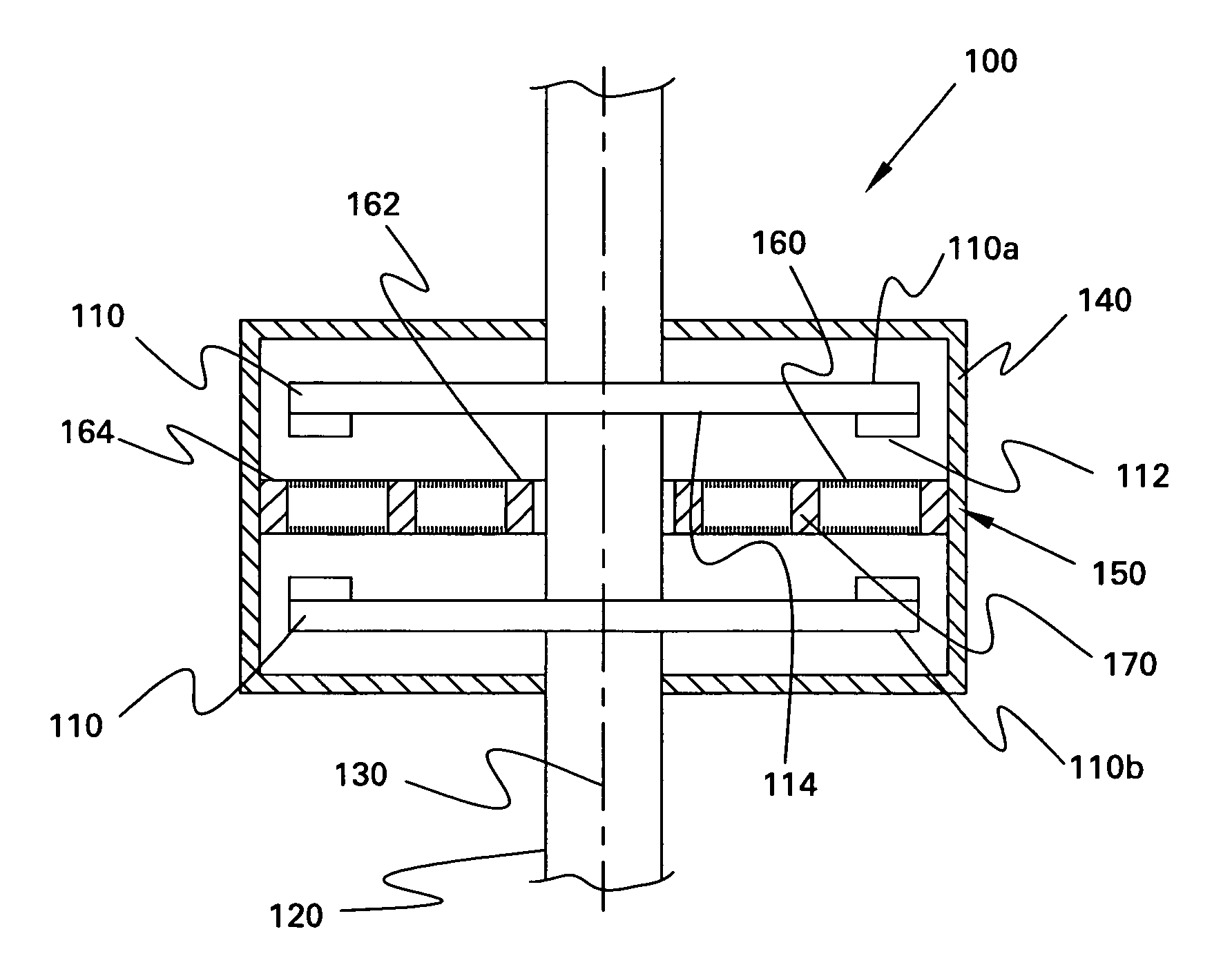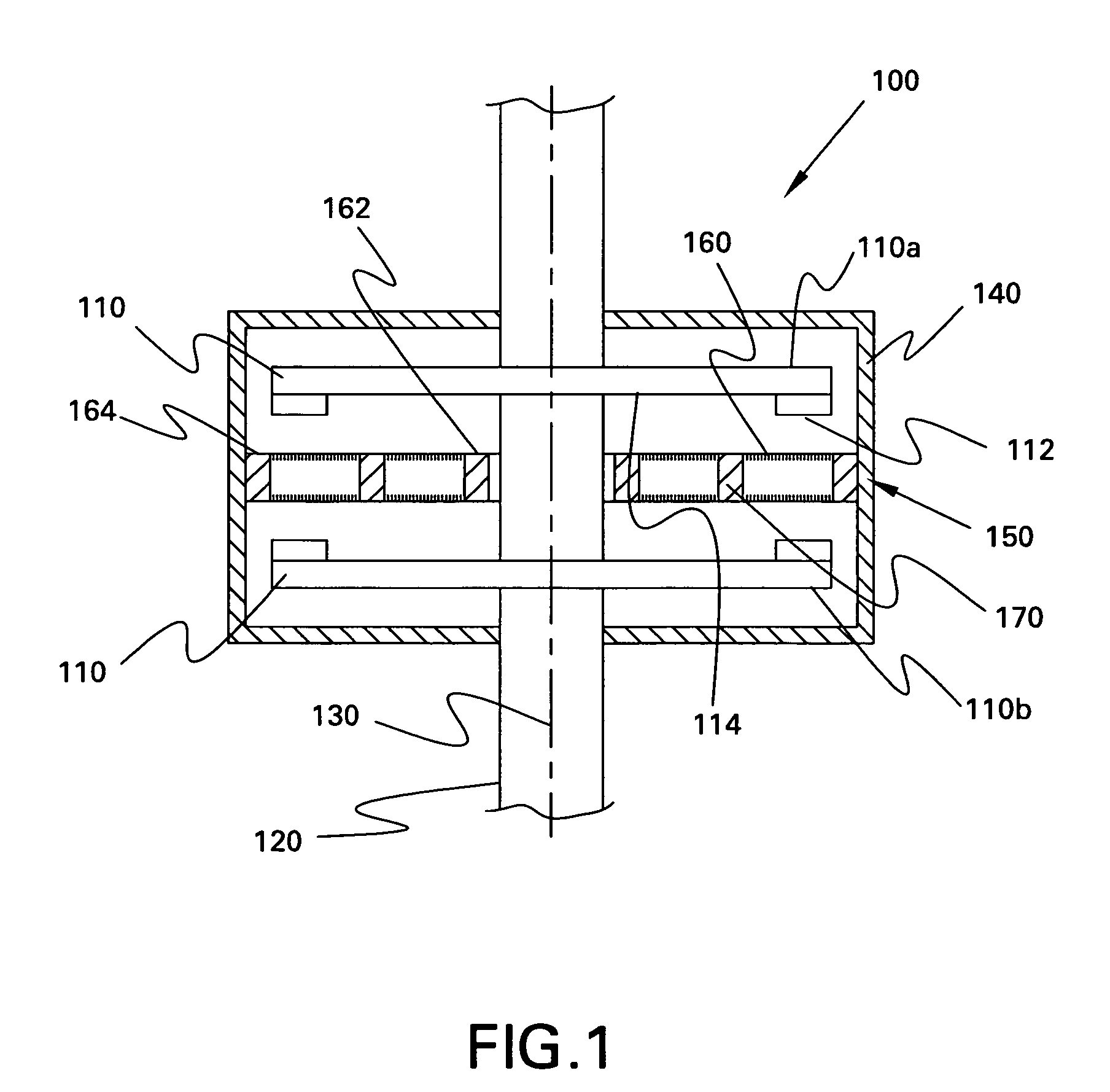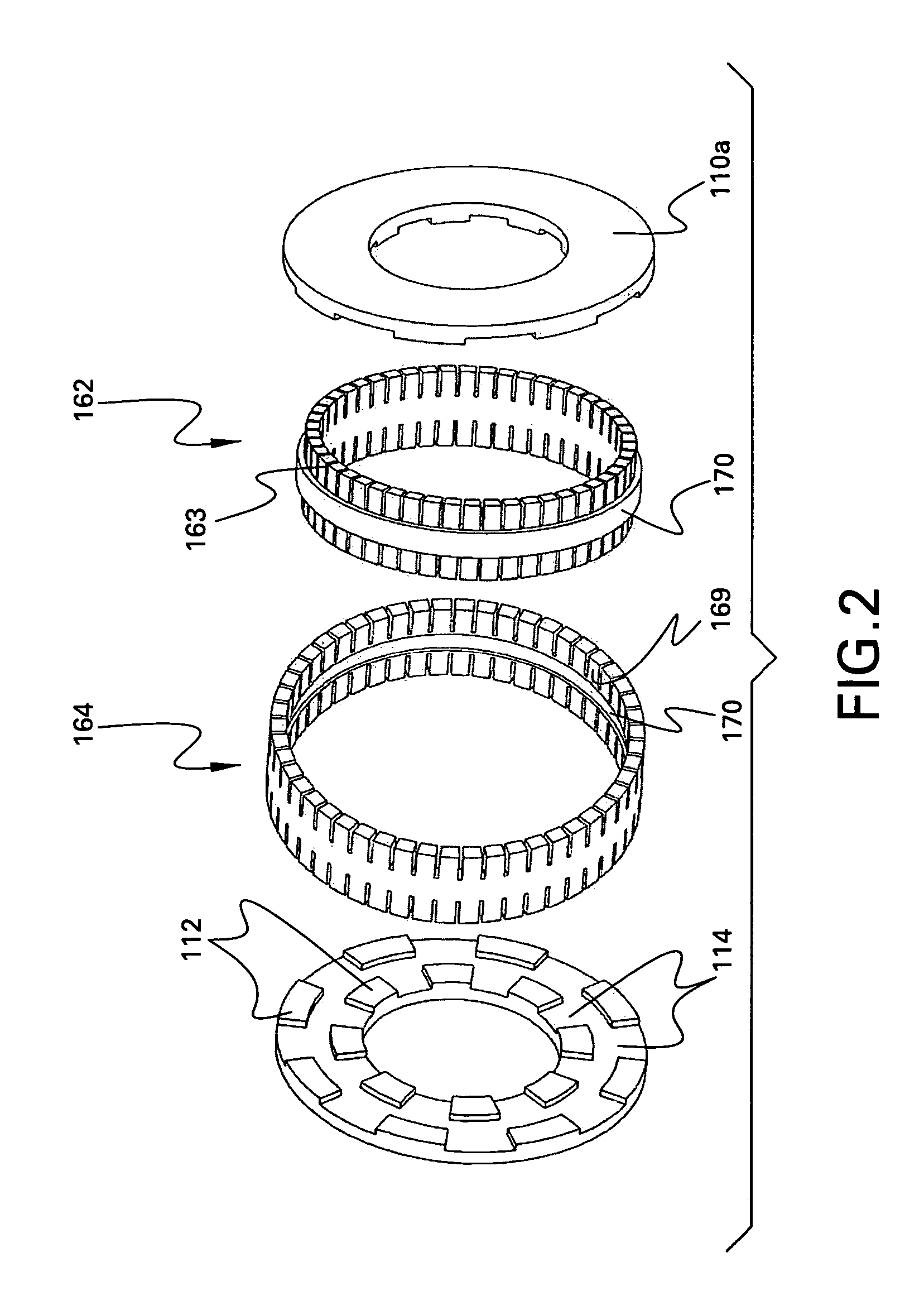Superconducting rotating machines with stationary field coils
a superconducting rotating machine and stationary field technology, applied in the direction of windings, magnetic circuit rotating parts, magnetic circuit shape/form/construction, etc., can solve the problems of degrading affecting the performance of the superconductor, and difficult design, fabricating and operating such a rotor, so as to improve the performance characteristics and increase the torque density
- Summary
- Abstract
- Description
- Claims
- Application Information
AI Technical Summary
Benefits of technology
Problems solved by technology
Method used
Image
Examples
Embodiment Construction
[0017]FIG. 1 is a cross-sectional view of an exemplary embodiment of an electrical machine 100. The machine 100 may operate as a motor and / or as a generator as desired. The machine 100 includes a rotor assembly 110 having a pair of rotor segments 110a, 110b mounted on a shaft 120. The shaft 120 is preferably formed of a non-ferromagnetic material, such as stainless steel. The rotor segments 110a, 110b are adapted to rotate as the shaft rotates about its longitudinal axis 130 and are spaced-apart axially along the shaft 120. Each rotor segment 110a, 110b includes a plurality of salient poles, such as iron poles 112 and a plurality of air poles 114. Embodiments of the rotor assembly 110 and rotor segments are described in detail below with reference to FIGS. 4 and 5.
[0018]The rotor assembly 110 is substantially enclosed within a stationary housing 140. The housing 140 rotatably supports the rotor assembly 110. The housing 140 is of a substantially cylindrical configuration. A stator a...
PUM
 Login to View More
Login to View More Abstract
Description
Claims
Application Information
 Login to View More
Login to View More - R&D
- Intellectual Property
- Life Sciences
- Materials
- Tech Scout
- Unparalleled Data Quality
- Higher Quality Content
- 60% Fewer Hallucinations
Browse by: Latest US Patents, China's latest patents, Technical Efficacy Thesaurus, Application Domain, Technology Topic, Popular Technical Reports.
© 2025 PatSnap. All rights reserved.Legal|Privacy policy|Modern Slavery Act Transparency Statement|Sitemap|About US| Contact US: help@patsnap.com



